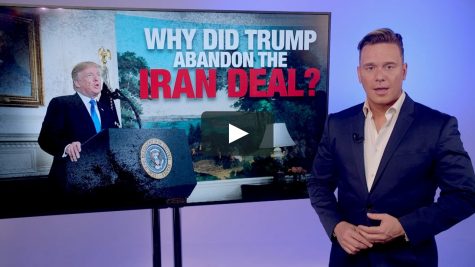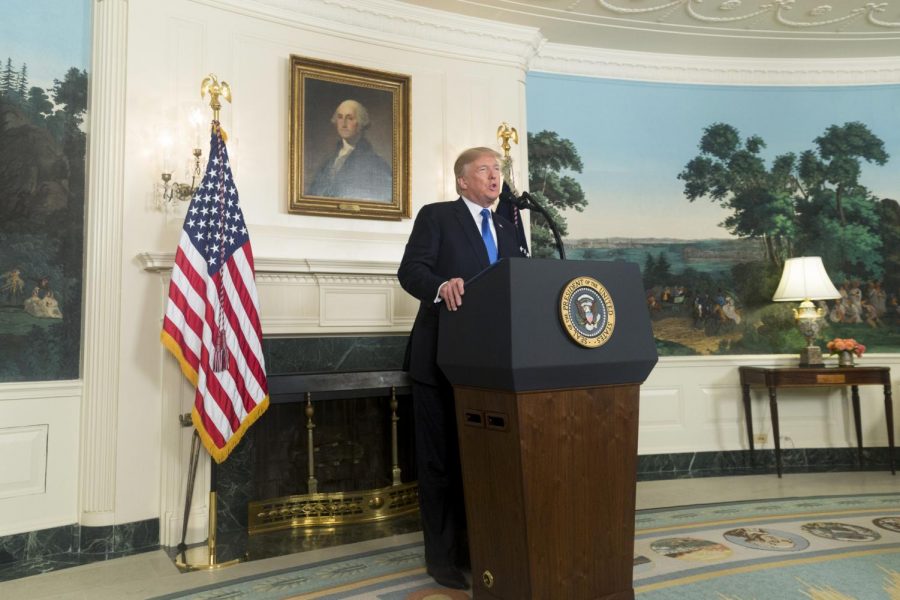Trump Announces End to US Involvement in Iran Nuclear Deal
May 8, 2018
On Tuesday, May 8th, President Donald Trump announced that the United States would be pulling out of the Iran Nuclear Deal.
The idea was first discussed on Trump’s campaign trail and is now being carried out, as it was announced to France’s President Emmanuel Macron. The deal will put relations with the United States’ European allies into great uncertainty.
According to Alex Ward at Vox.com, there are 3 main reasons for Trump pulling out of the deal.
The first being, according to Ward, that Trump’s belief is that Iran is violating the “spirit” of the deal by continuing to work against America in the Middle East. It is believed that Obama failed to realize that Iran is still a threat to the US, and that was not being addressed in the initial deal. The deal also did not prohibit Iranian missile testing.
Second, there are aspects of the deal that Trump does not comply with, such as the restrictions on uranium enrichment and the use of centrifuges. It is his hope to keep those restrictions in place to continue to burden the Iranian nuclear process, and because the deal went through, the restrictions would be much stricter.
Finally, the president believes a better deal can be made. He has even implied that he hopes to improve it and not dismiss it. In January of 2018, Trump said “I have outlined two possible paths forward: either fix the deal’s disastrous flaws, or the United States will withdraw.” In order to do this, Trump wants to curb Iranian missile tests, have frequent examinations of the Iranian nuclear test sites, and lift the time limits on uranium and centrifuge restrictions.
The Iran Nuclear Deal originally started because the international community believed that Iran’s nuclear weapon development was not out of peace. It was decided that Iran would lower its attempt at making nuclear weapons, and in exchange, the international community would step in and help its faltering economy.
According to BBC News, the deal gave Iran access to $100 billion in frozen assets overseas. It also lifted sanctions imposed by the United Nations, US, and Europe. This not only provided Iran with a more stable economy, but also strengthened the power of their President. In return, the US, and other countries, were guaranteed safety from a potential nuclear threat by limiting Iran’s nuclear activities and ensuring that inspections were taking place. This also substantially reduced the number of resources Iran had to make bombs.
Iran was using enriched uranium as reactor fuel, but more importantly in experimenting with nuclear weapons. In quiet Iran started to work with Plutonium and the International Atomic Energy Agency (IAEA) watched over Iran as they did so making sure they were not stepping out of line. By 2015 Iran had a stockpile of uranium, enough to be able to make 10 bombs.
The French and German leaders visited the White House the weekend before to try and convince President Trump to urge him to not back out of the deal. President Trump referred to the deal as “insane” and announced on Tuesday that the U.S. will leave the deal.
“I don’t know what the Nuclear Deal is,” said Senior Jack Deane. “Sounds like it is bad though.”
He was not alone in this state of unawareness as many other students interviewed had no knowledge on the topic as well.
The need for U.S. support is critical for the completion of this deal, and European countries, along with Iran, are praying the U.S. stays at the table. However, the European Union has an entirely different reason for the U.S. to stay at the table: money. Before the imposition of sanctions the European Union was Iran’s largest trade partner, and making this deal work would open up a flow of trade that would be profitable for not only Iran, but also the European Union.





